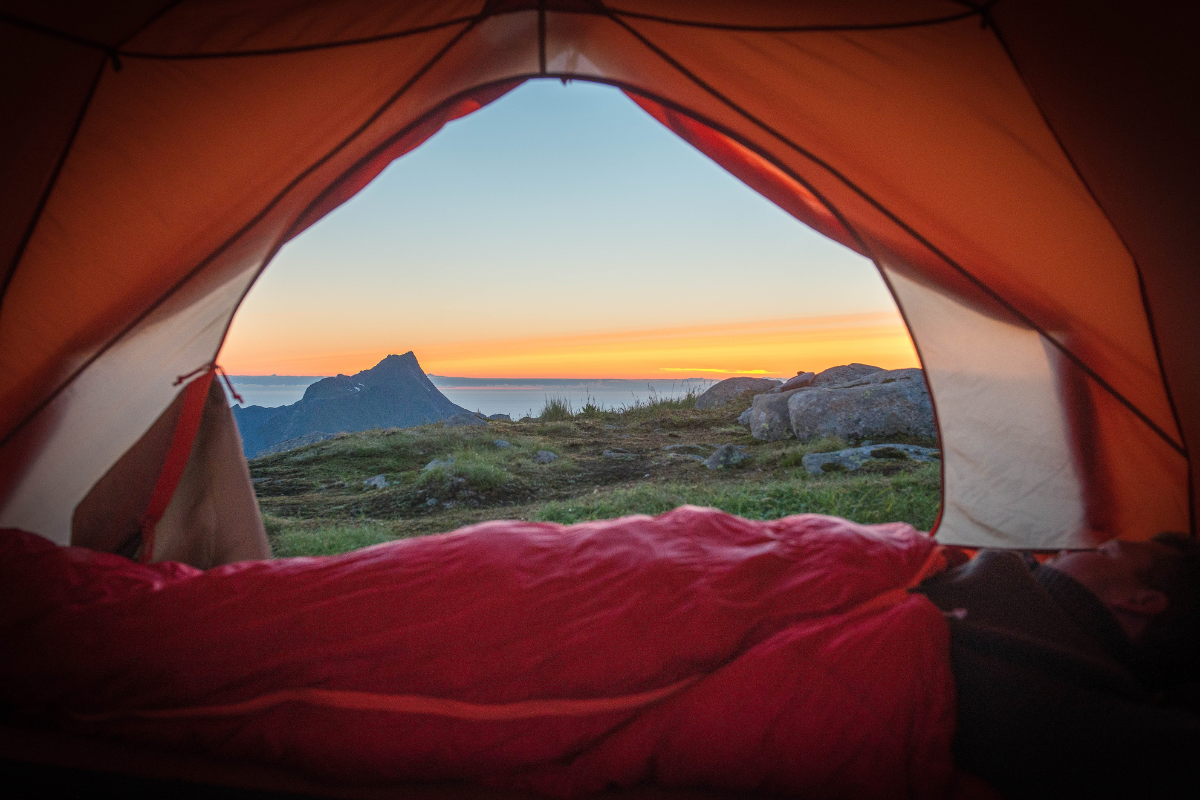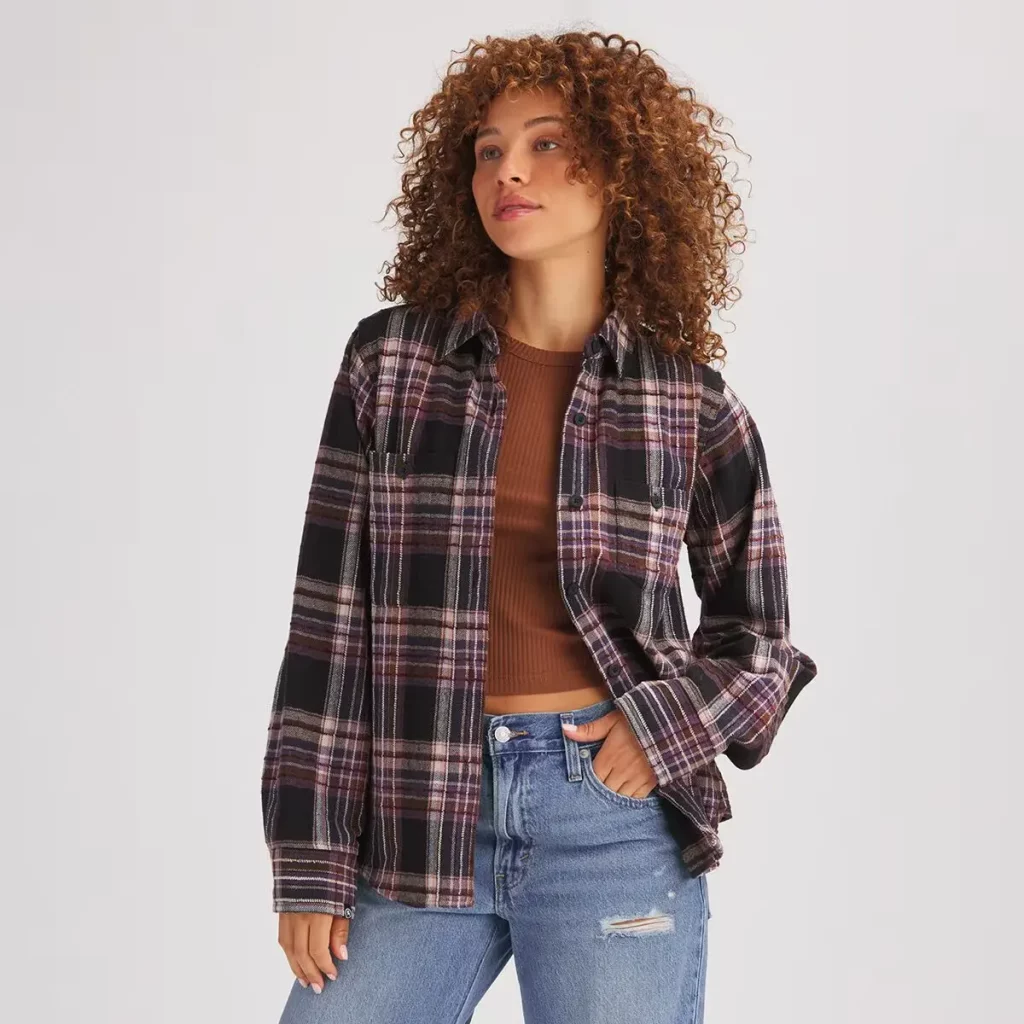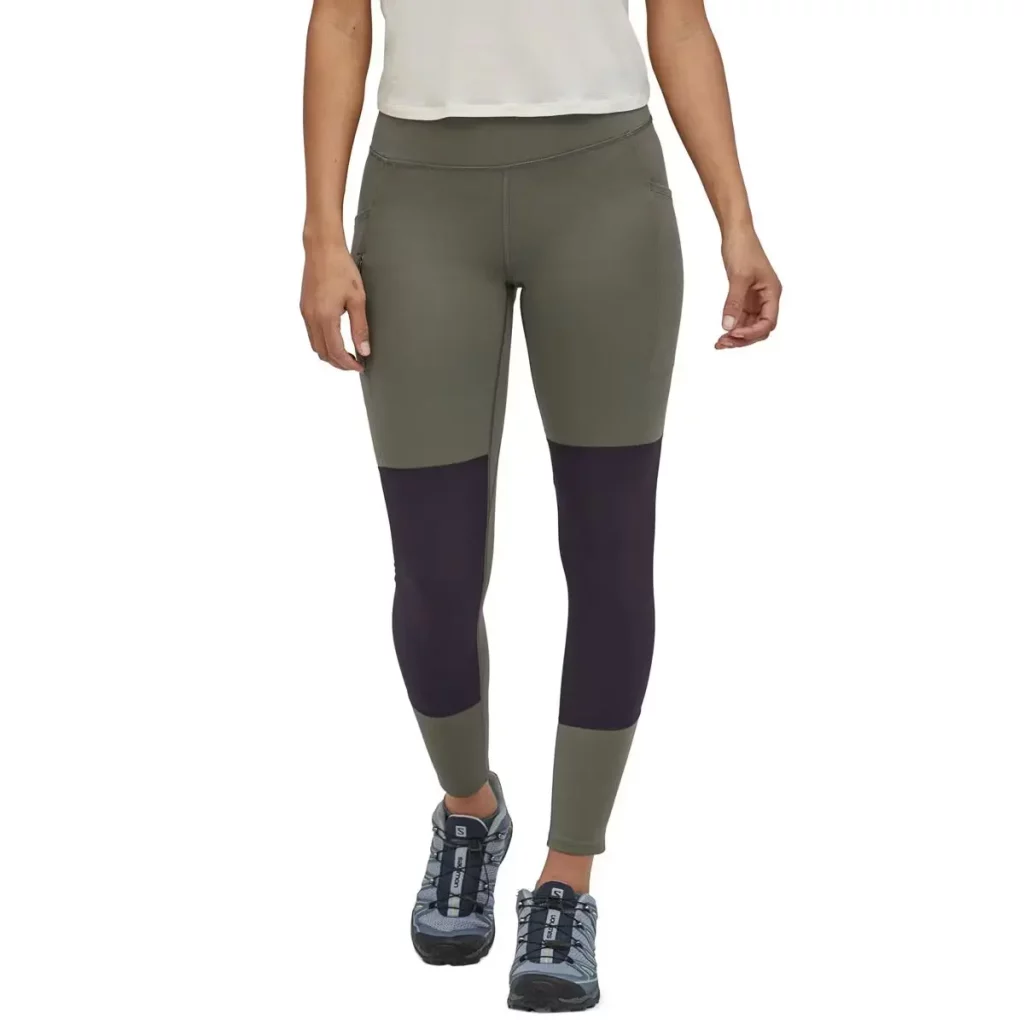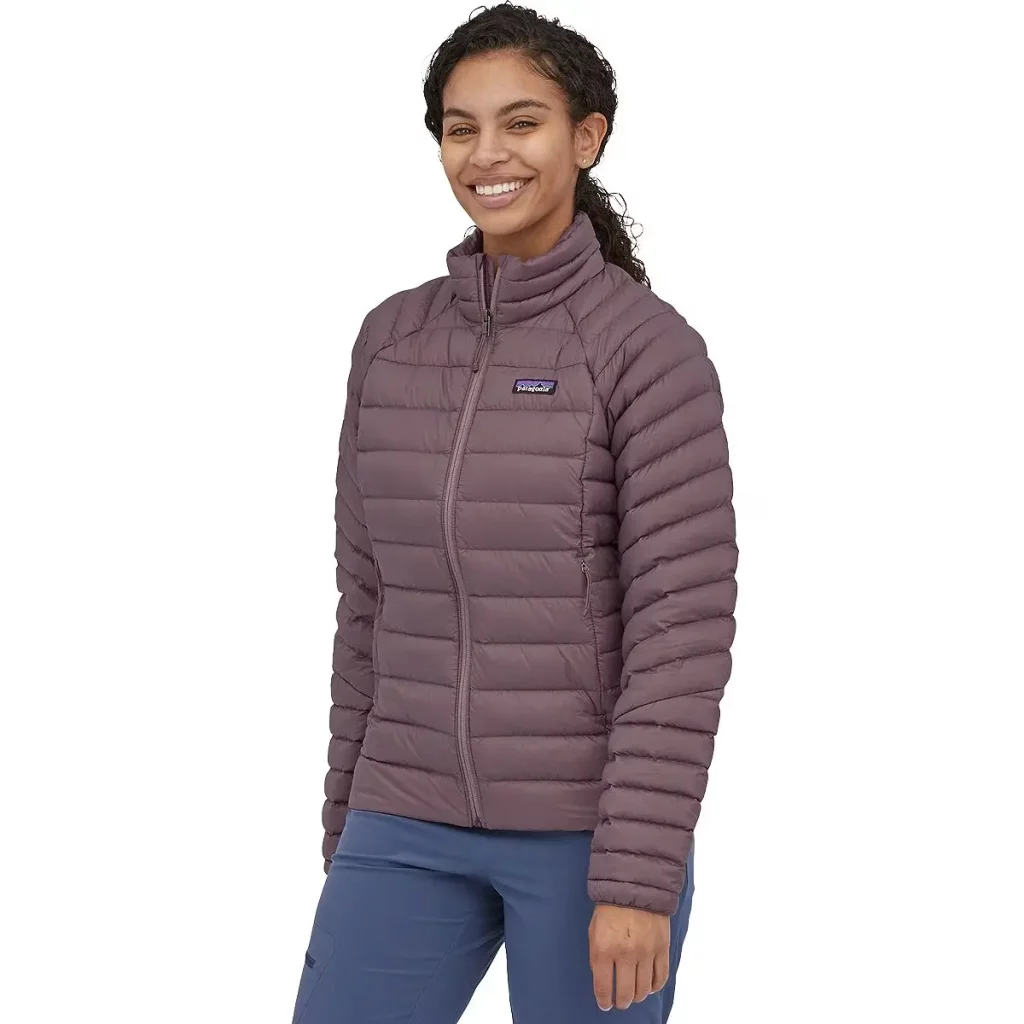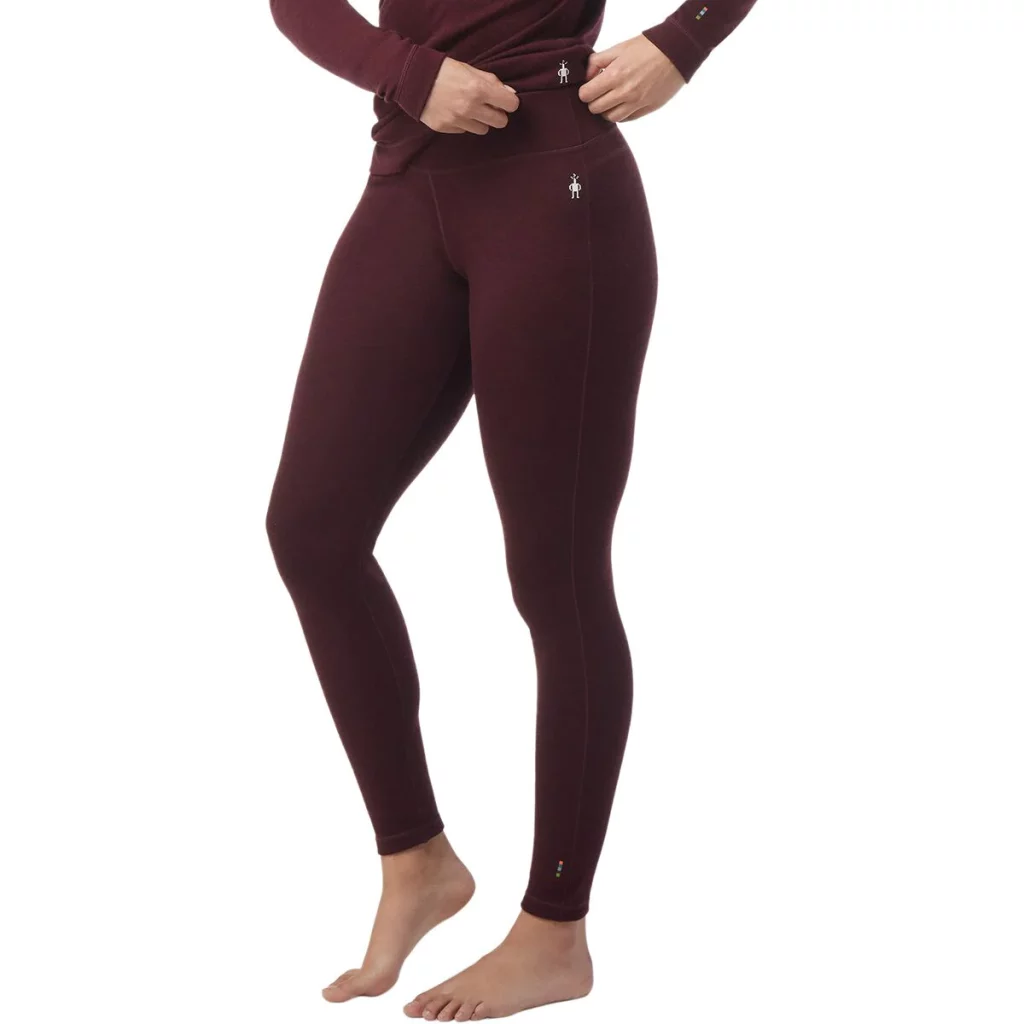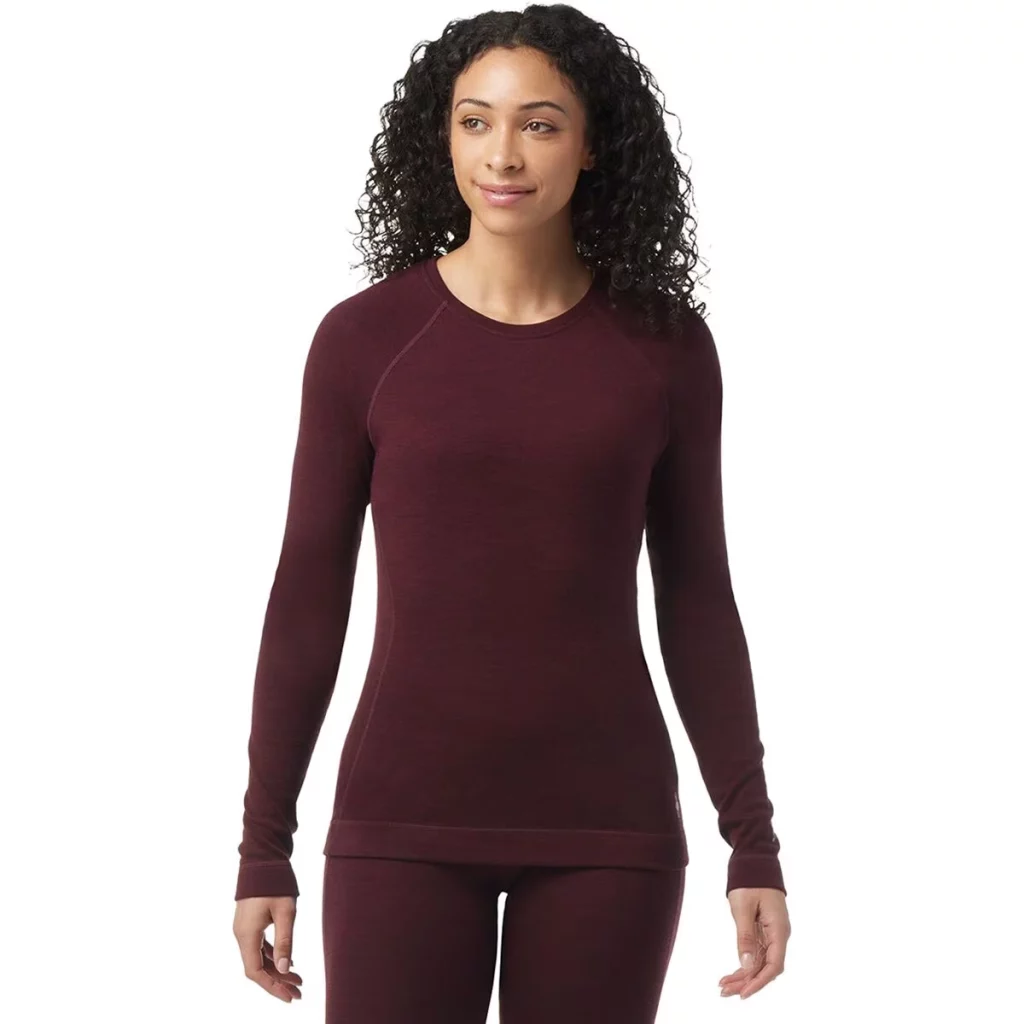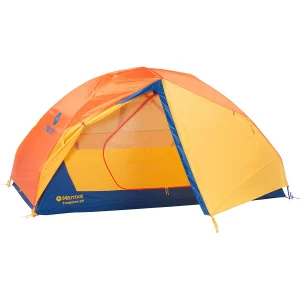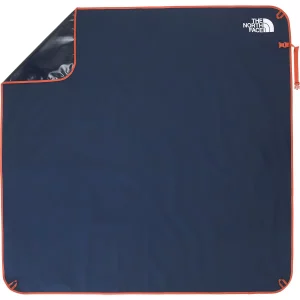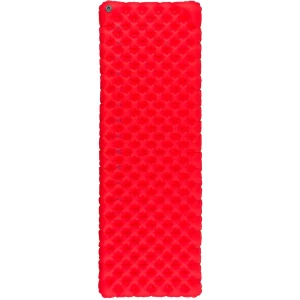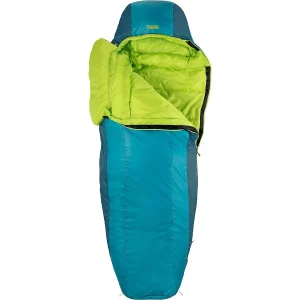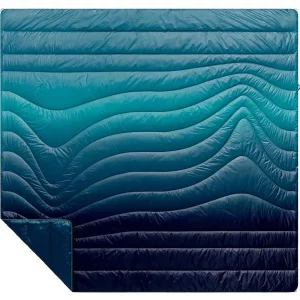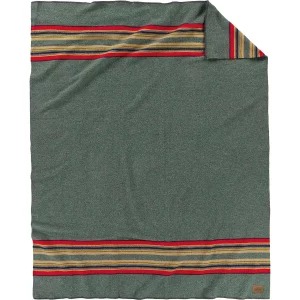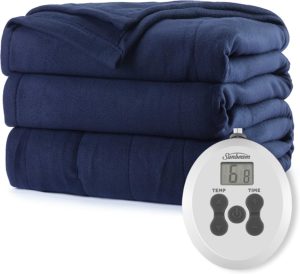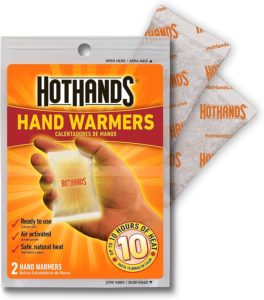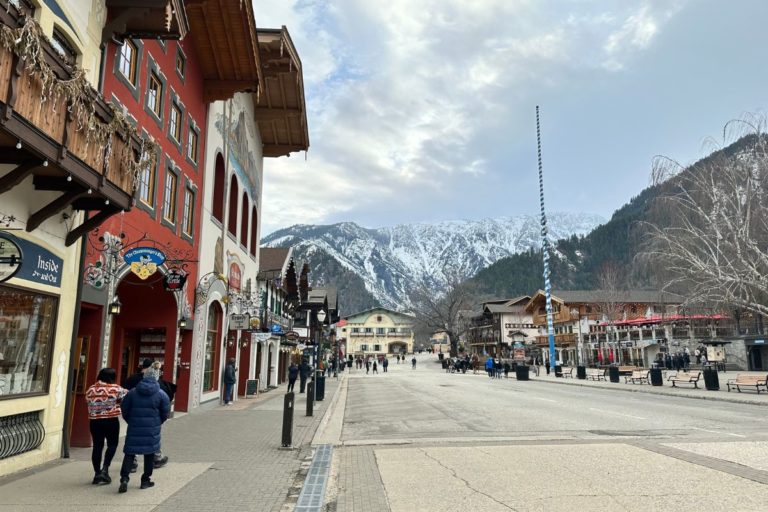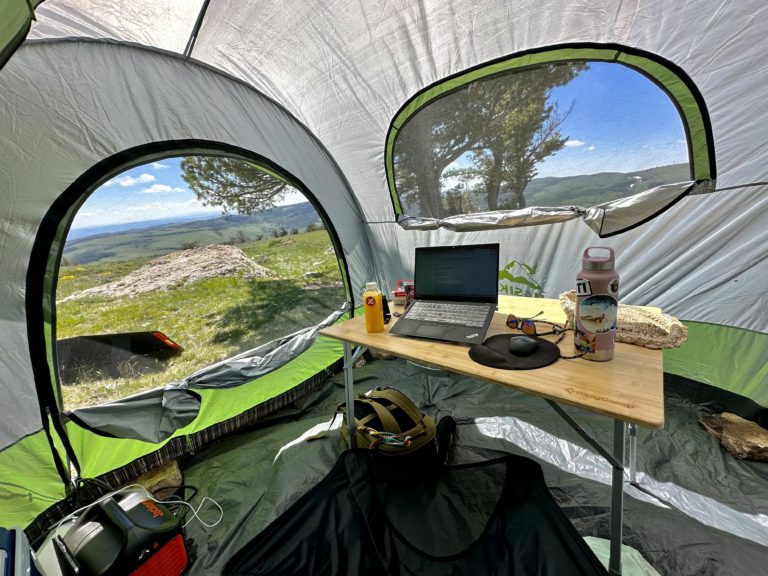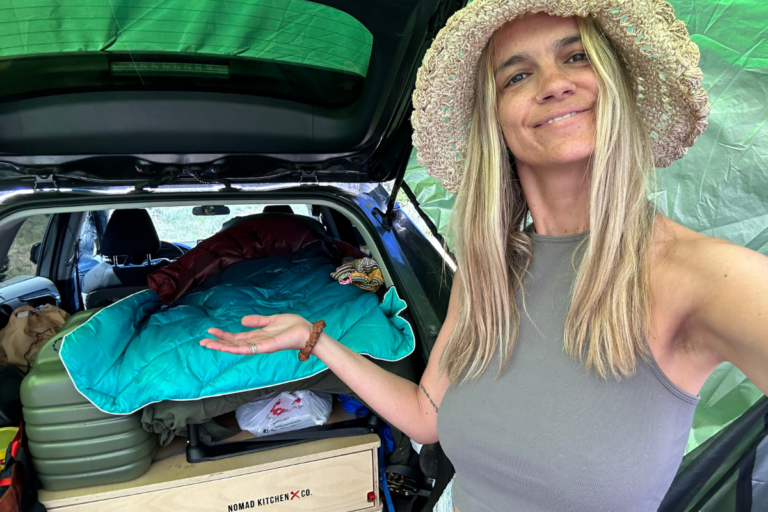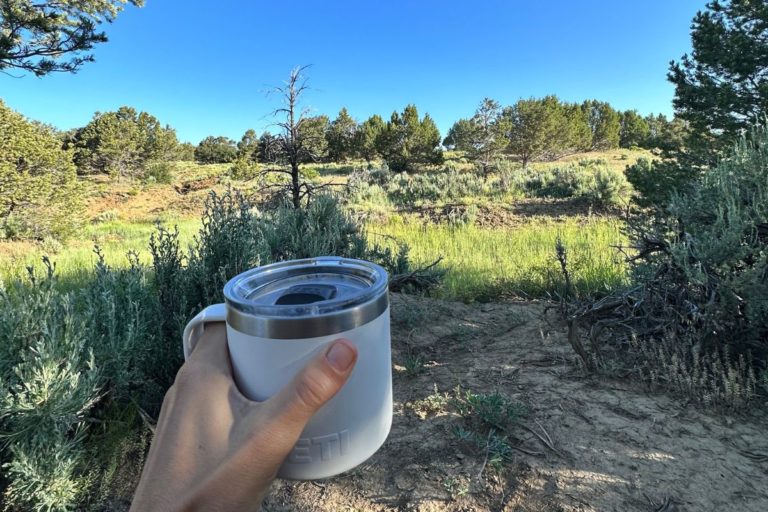How To Stay Warm In A Tent On Cold Nights
Knowing how to stay warm in a tent can make or break a camping trip. Cold nights can make for a miserable experience if you can’t stay warm!
If you are car camping and have the space (and luxury) to bring bulky items with you, then this will be a breeze. But if you’re backpacking into your campsite, then you’ll want to keep your sleep system as light (and warm) as possible.
And trust me, there’s way more to it than a good sleeping bag.
I’m currently prepping for an upcoming camping trip and I’m focused on keeping warm at night. Here’s everything to know about staying warm in a tent.
Preparing for Your Camping Trip
When it comes to camping, especially in colder weather, your clothing choices make a huge difference. It’s not just about packing your favorite cozy sweater, it’s about strategic dressing that maximizes body heat and minimizes discomfort.
Think of your camping attire as your personal, portable shelter. Just like your tent, it needs to protect you from the elements, keep you warm, and allow for flexibility and movement. The right clothing can help regulate your body temperature, wick away moisture, and even provide a barrier against wind and rain.
Dress in Layers To Key to Regulate Body Temperature
By adding or removing layers, you can easily adjust to changing weather conditions and activity levels. But layering isn’t just about piling on as many clothes as possible. It involves three key components: a base layer for moisture management, a middle layer for insulation, and an outer layer for weather protection.
The base layer is your second skin. It should be snug and made of moisture-wicking material like merino wool or synthetic fabrics to keep you dry.
The middle layer is your main insulator; think fleece jackets or down vests.
The outer layer is your shield against the elements. This should be a waterproof or water-resistant shell that can fend off rain, snow, and wind.
This is true in cold weather, no matter if you’re sleeping, hiking, or snowshoeing in freezing cold. I usually like to sleep in my base layer in warm camping and add the middle layer for extra chilly nights.
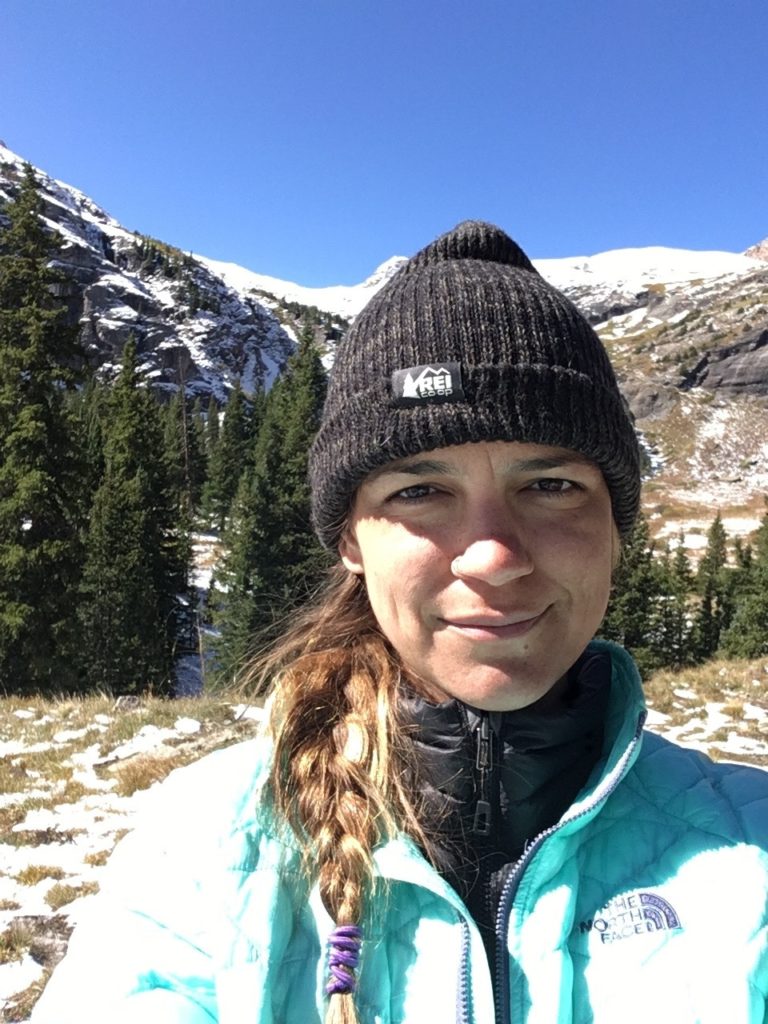
These are the mid-layers I always have with me when at higher altitudes:
Pack Extra Sleeping Clothes to Stay Dry and Warm
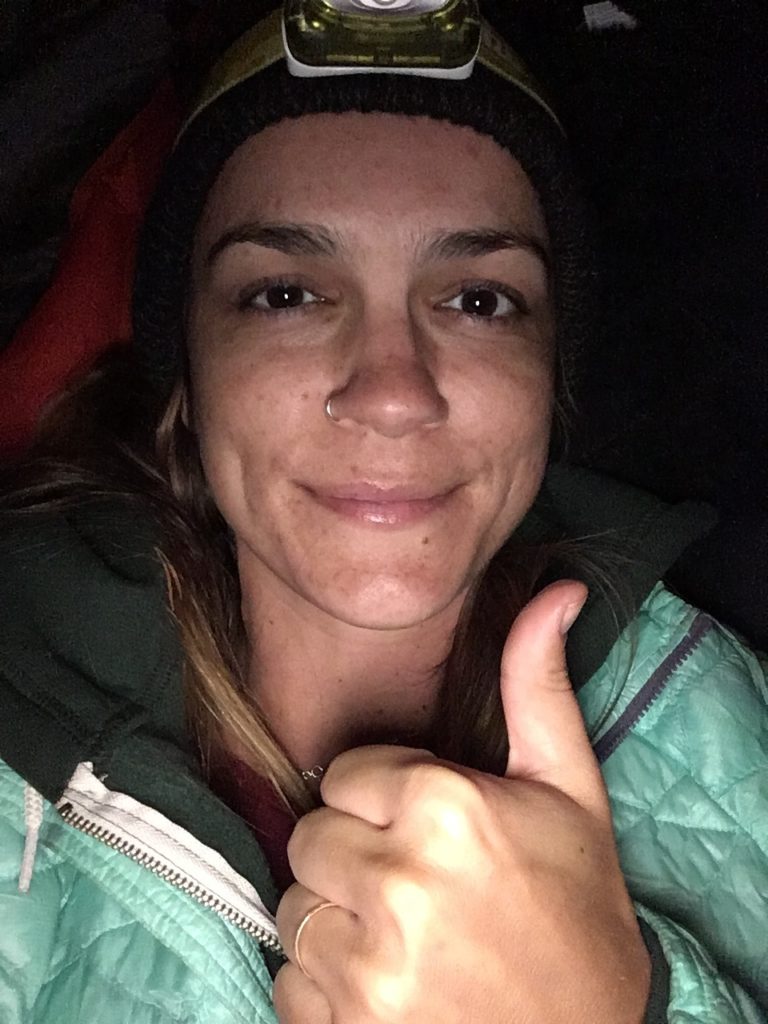
Dry, warm clothing is the very first step to a good night’s sleep, especially during cold weather camping. I always like to pack an extra base layer to sleep in.
A good base layer will wick away sweat from your skin, keeping you dry and preventing the chill that can come from wearing damp clothing in cold weather.
As soon as you get to camp, change out of your sweaty hiking clothes and into different night clothes to stay warm as the sun ducks behind the mountains for the evening.
Air your wet clothes out overnight and change back into them in the morning.
Look for base layers made from materials like merino wool or synthetic fabrics, which are excellent at moisture management and provide good insulation. Keeping your feet and head warm will be super helpful in really cold temperatures. In that case, wool socks and a hat will trap heat in the body, keeping you warm on a cold night.
This is what I wear:
Setting Up Your Camp
Setting up your camp correctly is the next step to ensuring a warm and cozy night in your tent. It’s not just about finding a flat spot and pitching your tent; it’s about understanding the environment and using it to your advantage. You’ll want to consider factors like wind direction, sun exposure, and even the type of ground you’re setting up on.
You’ll also want to make sure that you have the right gear to withstand that environment and stay warm camping. (Trust me, tent camping is a whole lot more fun when the tent can handle the weather.)
Here’s everything I’ve learned about setting up a campsite in cold weather camping.
Choosing the Right Tent
Warm tents make keeping warm a lot easier 😉 A smaller tent will heat up faster with your body heat, making it a warmer choice than a massive tent. But don’t go too small – you’ll want enough space to be comfortable and store your gear.
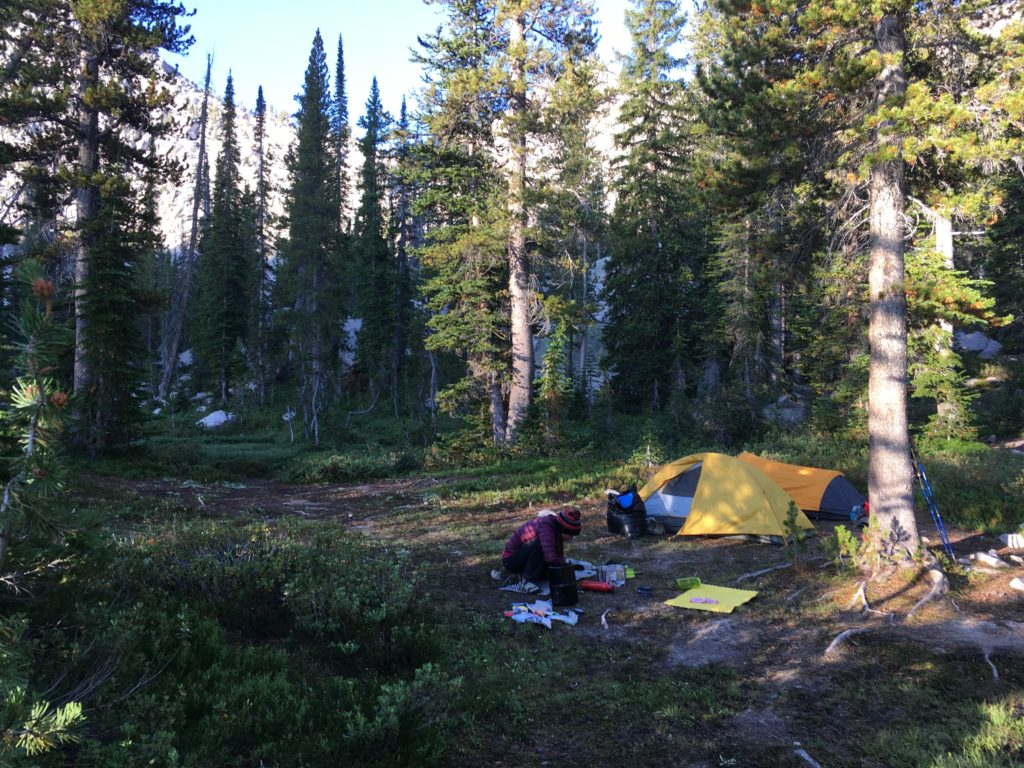
Consider a tent with a good thermal rating or insulation. Some tents are specifically designed for colder weather and come with extra insulation and wind-resistant features. If you’re a frequent camper, it might be worth investing in a three season tent that can withstand harsher conditions. Four season tents can withstand the widest range of conditions.
Material also plays a role in how warm your tent will be. Tent materials can vary greatly, and each has its own set of advantages and disadvantages. The most common materials you’ll find are nylon, polyester, and canvas. Tents made from thicker, heavier material will generally be warmer than those made from thin, lightweight material. But remember, a thicker material might mean a heavier tent to carry.
Nylon and polyester are popular for their lightweight and water-resistant properties. They’re typically used in 3-season tents that are designed for spring, summer, and fall when you’re less likely to encounter extreme weather conditions. These materials are relatively thin, but they can be coated with a waterproofing solution to enhance their resistance to rain. On average, a 3-season, 2-person tent made from these materials can weigh anywhere from 3 to 6 pounds.
I really like this 2 person, 3 season tent by Marmot. It’s super affordable for what you’re getting and has a little flap for protection against the elements:
However, if you’re planning to camp in colder weather or harsh conditions, you might want to consider a tent made from canvas (also known as cotton). Canvas tents are much heavier and bulkier, but they offer superior insulation compared to nylon or polyester. They’re breathable, which reduces condensation inside the tent, and they’re generally more durable. Canvas is often used in 4-season tents designed for use in all weather conditions, including winter. These tents are heavier, with a 4-season, 2-person tent often weighing in at 8 to 12 pounds or more.
When choosing a tent, consider the weather and environment you’ll be camping in.
- For summer camping, a lightweight nylon or polyester tent with good ventilation will be more comfortable.
- For winter camping, a canvas tent with good insulation will be warmer.
Lastly, pay attention to ventilation. While it might seem counterintuitive when trying to stay warm, good ventilation can actually help keep your tent warmer by reducing condensation inside the tent. So look for tent windows or adjustable ventilation options.
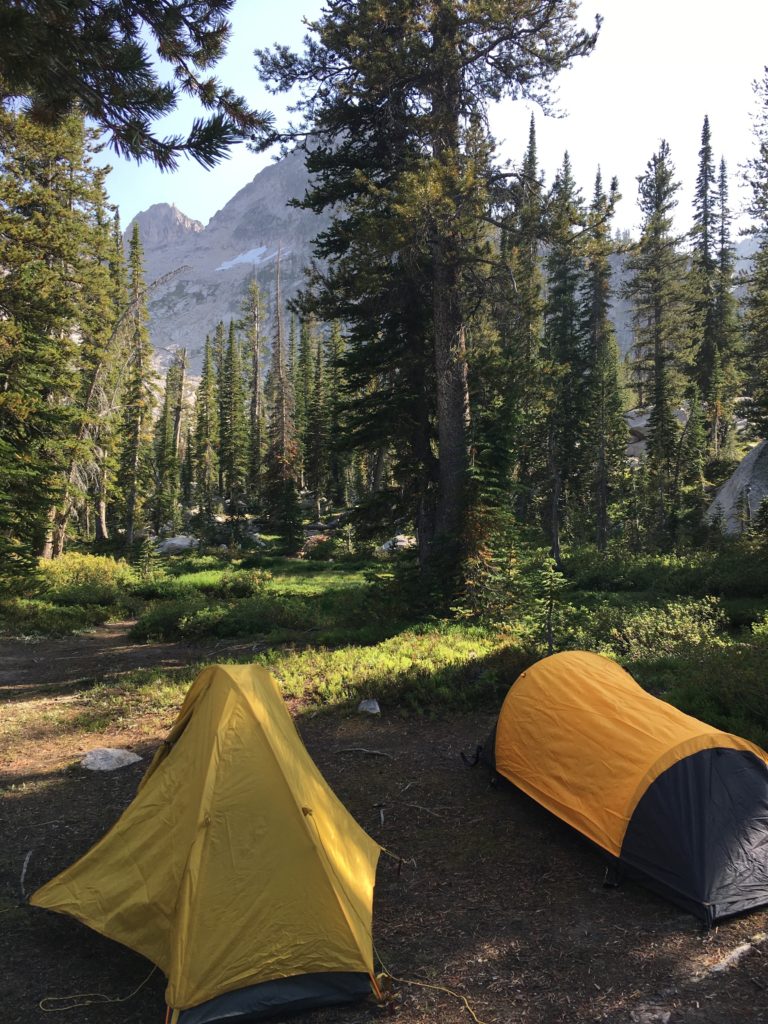
Tent Insulation
Insulation is your tent’s best friend when it comes to retaining heat. One effective way to insulate your tent is by using a tent carpet or rug, which adds a layer of insulation to the tent floor annddd makes the tent feel homier.
A ground tarp works well for this (if you’re car camping, it might be too bulky for carrying long distances).
The R-value is a measure of thermal resistance, indicating how well a material resists the conductive flow of heat. The higher the R-value, the better the insulation and the warmer you’ll stay.
When it comes to tents, sleeping pads, and sleeping bags, the R-value you should look for varies by season.
- In the summer, an R-value of 1 or 2 is usually sufficient as the weather is warmer.
- For spring and fall camping, aim for an R-value between 2 and 4.
- For winter camping, you’ll want an R-value of 4 or higher to ensure you stay warm in colder temperatures.
R-values are determined through a standardized test that measures the material’s ability to resist heat flow. It’s important to note that R-values can add up – if you use two sleeping pads, each with an R-value of 2, you’ll get a combined R-value of 4. This can be a handy trick for staying warm in colder weather without needing to buy new gear.
Sleeping Pads, Bags and Quilts
Once you’re inside your tent, it’s time to bundle yourself up with a good sleeping pad, warm sleeping bag, and quilt if you have space for it.
Sleeping Pads
A good quality sleeping pad will add another layer of insulation between you and the ground. In fact, using two sleeping pads can be even better than one for keeping the cold ground at bay. The R-values (a measure of thermal resistance) of two pads can combine to offer greater insulating power.
When it comes to sleeping pads, there are three main types: air pads, self-inflating pads, and closed-cell foam pads.
Air pads are lightweight and pack down small, making them great for backpacking. They often have a higher R-value (which, as we discussed, measures insulation) and can be inflated to your desired firmness. However, they can be susceptible to punctures, so it’s a good idea to carry a repair kit.
Self-inflating pads offer a combination of open-cell foam insulation and air. They’re comfortable and offer good insulation, but they’re heavier than air pads and can also be punctured.
Closed-cell foam pads are the most durable and are great for those on a budget. They’re lightweight and provide good insulation, but they’re not as comfortable as the other options.
Insulated sleeping pads are a specific type of sleeping pad designed to provide extra warmth, making them an excellent choice for camping in colder weather. They fit into the category of air pads and self-inflating pads, as these types can include insulation, but they are specifically designed with materials that prevent heat loss.
I really like this insulated sleeping pad:
Insulated sleeping pads work by using a layer of insulation (often synthetic or down material) sandwiched between the outer layers of the pad. This insulation traps and holds a person’s body heat in, preventing it from being lost to the cold ground. Some insulated pads use reflective materials (like a reflective foil) to bounce your body heat back to you, further enhancing their warmth.
In terms of weight and packability, insulated sleeping pads tend to be slightly heavier and bulkier than non-insulated pads due to the added insulation. However, the trade-off is the increased warmth and comfort they provide in colder conditions.
Look for a pad with an R-value appropriate for the season you’ll be camping in (1-2 for summer, 2-4 for spring and fall, 4+ for winter). Also, consider the length and width of the pad so it fits well in your tent and matches your body size.
Sleeping Bags
Sleeping bags come in three main types: summer, 3-season, and winter.
Summer sleeping bags are suitable for temperatures of about 30 degrees Fahrenheit and higher. They’re lightweight and often have full-length zippers that allow them to be opened and used as a quilt.
3-season sleeping bags are suitable for temperatures of about 20-30 degrees Fahrenheit. They have a snug fit to prevent the escape of body heat and often come with a hood for extra warmth. I like this kind of sleeping bag for most of the year because even warmer nights are still pretty chilly at elevation.
I have this one, which is rated for 20F, well below freezing point but not too warm for Fall or Spring camping:
Winter sleeping bags are suitable for temperatures of less than 20 degrees Fahrenheit. They’re designed with extra insulation and often have a draft collar that prevents the escape of heat from the neck and shoulders.
When choosing a sleeping bag, consider the temperature rating (which should be lower than the lowest temperature you expect to encounter), the fit (a snug fit will keep you warmer), and the insulation type (down is lighter and compresses more but is more expensive and less effective when wet, while synthetic insulation is cheaper, water-resistant, and insulates even when wet, but is heavier).
Quilts And Blankets
Lightweight quilts are a great addition to sleeping bags for backpacking or for those who find sleeping bags too chilly. I really like my Rumpl blanket. It’s easy to pack down and insulates well. I wrap it around me when sitting in a camp chair, use it on the ground for a place to lie down, and then tuck it around me when I’m sleeping for extra warmth. I wouldn’t say it’s super warm, but it’s versatile and cuts the edge, which makes it worth having.
When choosing a quilt, consider the temperature rating (like with sleeping bags, it should be lower than the lowest temperature you expect to encounter), the insulation type (down or synthetic), and the size (it should be large enough to cover you comfortably).
If you’re in especially cold weather, then consider whether the quilt has features like a footbox (which keeps your feet warm), a draft collar (which prevents heat from escaping around your neck), and pad attachment straps (which prevent drafts from entering the sides of the quilt).
Now, if you’re car camping and have the luxury of bringing something denser, then I’d for sure upgrade to these Pendleton blankets. They are so effing warm. I had the absolute privilege to use one recently and it was toooooooasty.
You could also use an electric blanket while car camping by plugging it into a solar powered battery like a Jackery.
Tent Location
Your tent is your fortress against the elements, and where you place it can significantly affect its warmth. Look for a spot that’s shielded from the wind, perhaps near a natural barrier like a cluster of trees or a hill. Avoid valleys where cold air tends to settle, and if you can, find a spot that gets morning sun to help warm up your tent at the crack of dawn.
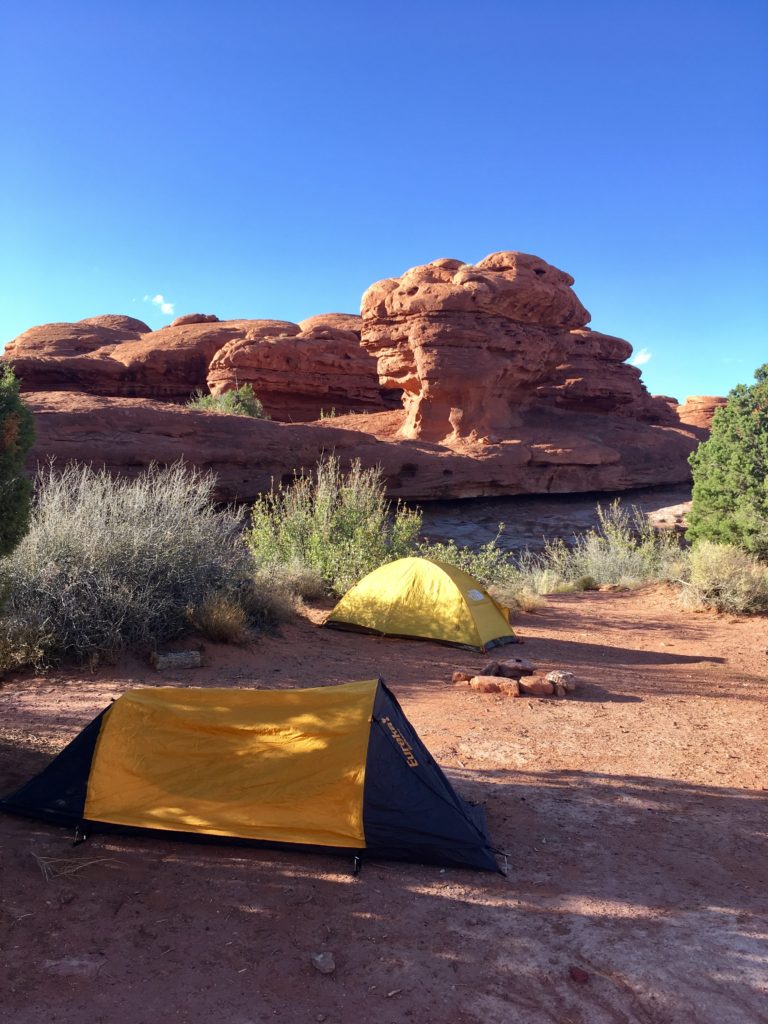
When setting up your tent, make sure it’s well-secured and taut, as a flapping tent can let in the cold wind. Also, consider the direction your tent is facing. The door should ideally face away from prevailing winds.
As mentioned, a sheltered spot away from wind and cold air pockets is ideal. But that’s not all. The ground you’re setting up on matters too. A soft, grassy area can provide natural insulation, while rocky or wet ground can make your tent colder.
How to Keep a Tent Warm Without a Fire
While a crackling fire might be the first thing that comes to mind when you think about staying warm while camping, it’s not always feasible or safe to have one near your tent. Neither is a space heater or portable gas heaters, unfortunately (though I for sure have looked into them after a few extra chilly nights). But don’t worry, there are plenty of other ways to keep your tent warm.
- Hot Water Bottle: This is an old but effective method. Fill a durable water bottle (like a Nalgene bottle) with hot water and place it in your sleeping bag before you go to bed. I use a portable travel kettle to heat up the water and cradle it on my lower abdomen and upper thighs, when on my side and curled up tight. The hot water bottle will act like a mini heater and warm up your sleeping bag. Just make sure the lid is tightly closed to prevent any leaks! Be aware that the hot water will want to release steam and so pressure will build in the bottle. After boiling your water, let some steam off before closing the lid.
- Heated Stones: If you have a campfire going, you can heat up a few stones. Once they’re hot, wrap them in towels or put them in a sock, and place them in your tent. They’ll radiate heat for a few hours. Be careful not to use river rocks as they can explode when heated.
- Hand Warmers: If you’re really worried about staying warm, then take some hand warmers with you. These portable hand warmers are great in a pinch and work quickly.
- Body Heat: If you’re camping with others, the combined body heat can help warm up the tent. A smaller tent will heat up faster with body heat than a larger one.
- Heated Blanket: If you’re car camping, then you can plug an electric blanket into your Jackery battery. That’d be the easiest way to stay warm in a tent all night long.
- Tent Heaters: There are safe tent heaters available that are designed specifically for camping. These heaters are safe to use in enclosed spaces and can provide a good source of heat. Always follow the manufacturer’s instructions for use.
- Warm Drinks and Food: Having a warm meal before bed helps keep your body temperature up throughout the night. Warm liquids (like coffee or hot chocolate 🤤) can also warm your core temperature too.
How Cold is Too Cold to Sleep in a Tent?
So, how cold is too cold to sleep in a tent? Well, there’s no one-size-fits-all answer to this. It largely depends on your gear, your tolerance to cold, and your preparedness. However, most campers agree that temperatures below 30°F (-1°C) start to feel quite chilly, especially if you’re not adequately equipped to stay warm in a tent. Remember, hypothermia is a real risk in cold weather, so it’s pretty important to have the right sleeping bag, layers of clothing, and even a tent heater if necessary.
Final Thoughts
Feeling ready for your next camping trip? I sure am. That’s what inspired me to write this post! I’ve got my warm sleeping bag, insulated sleeping pad, a warm hat, and wool socks. If I’m missing anything, I’ll come back here and update this post 😉

